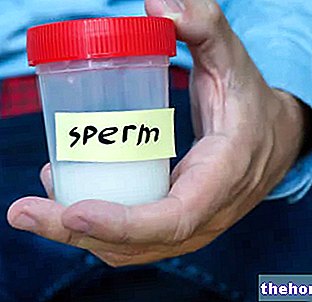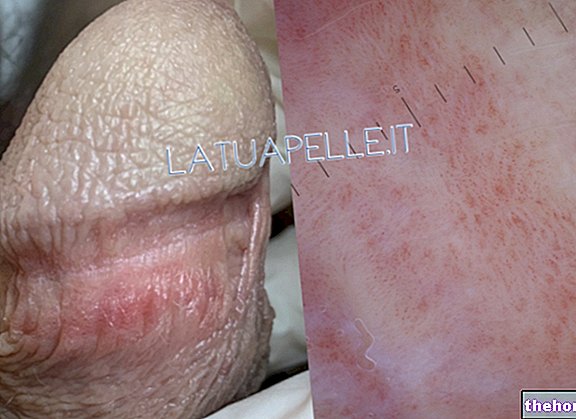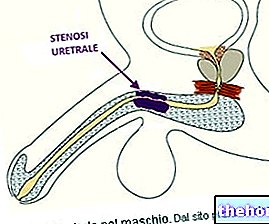Definition of balanoposthitis
Balanoposthitis indicates a morbid condition of an infectious / inflammatory nature that affects both the surface of the glans (balanus) and the inner sheet of the foreskin (also called "poste", a thin layer of skin-mucous lining that supports the glans penis, allowing it the movement).

Symptoms
For further information: Balanoposthitis Symptoms
Balanoposthitis is characterized by erythema, itching, edema, irritation, pain, maceration, phimosis (narrowing of the preputial), microvesiculation of the glans and foreskin, dysuria (difficulty / pain in urination), and sometimes bleeding. The disease begins with vesico-pustular lesions that tend to erupt early: consequently, the likelihood of erosions covered with scales increases. In some cases, balanoposthitis generates superficial ulcers and inguinal adenopathy. [adapted from Treatise on dermatology, by A. Giannetti].
Causes
Balanoposthitis can be caused by many factors, although it is often difficult to isolate the root cause. The disease can be favored by the particular structure of the foreskin, which is so adherent as to prevent proper intimate hygiene: bacteria can lurk in the subreputial site, generating inflammation and possible tissue necrosis.
Balanoposthitis can also be a consequence of infection with Candida albicans, Chlamydial urethritis (Chlamydia trachomatis), trichomoniasis, Herpes simplex, gonorrhea, syphilis or scabies.
Other predisposing factors include: psoriasis, lichen planus, seborrheic dermatitis, iatrogenic (drug-generated) erythema, Queyrat's erythroplasia (malignant disease affecting the foreskin and glans: this is a potentially dangerous precancerous form).
Balanoposthitis could be a wake-up call for diabetes.
In summary, the main etiological factors triggering balanoposthitis are multiple and heterogeneous: allergies, irritations, infections, metabolic-immunological causes, atypical dermatoses and precancerous diseases.
Classification
Balanoposthitis are classified according to the causal factor:
- Allergic balanoposthitis: represents a possible effect of contact dermatitis, caused by piercings, latex (condoms), cosmetics or pharmaceutical substances used on the genitals.Even the partner's topical cosmetics may appear too aggressive for the man and cause allergic balanoposthitis, sometimes diagnosed as irritating balanoposthitis.
- Irritating balanoposthitis: represents a possible consequence of the use of aggressive detergents, topical pharmacological substances or contraceptives applied by the partner in the vagina. Even frequent sexual intercourse could generate microtrauma in sensitive subjects which, repeated, could cause balanoposthitis; the irritative form generates burning, erythema , itching, exudation.
- Balanopostitemicotica: the Candida albicans it certainly represents the fungus that most affects the manifestation of mycotic balanoposthitis. The picture becomes even more complicated when it comes to one relapsing candidiasis balanoposthitis, signal of possible local / systemic immunosuppression or diabetes.
- Immunological balanoposthitis: pathology that denotes a rather particular clinical picture:
- there immunological balanoposthitis of Lortat-Jacob and Civatte it is the atrophic form of balanitis, which creates keratotic clusters;
- there synechiating immunological balanoposthitis provokes the adhesion of the preputial sheet on the glans (diagnosis and curative therapy must be timely);
- Zoon's chronic balanoposthitis causes the formation of red spots on the glans penis and foreskin.
- Infectious balanoposthitis: affects most sexually transmitted diseases and is classified into two sub-categories:
- balano bacterial postitis, mainly caused by staphylococci, streptococci, enterococci, gonococcus, Chlamidia trachomatis.
- barnacle postitis viral, mainly caused by the "HerpesSimplex type I or II
- Protozoal balanoposthitis: generated by Trichomonas spp.
- Balanoposthitisatrogenic: consequence of the excessive use of drugs (eg antibiotics)
- Balanopostitemista: pathology affecting the balano-preputial sulcus caused by several concomitant factors, such as infections, dermatitis or inflammation.
Treatment
For further information: Medicines for the treatment of Balanoposthitis
Balanoposthitis therapy must be targeted: this is chosen according to the infectious, inflammatory, irritating or allergenic agent that caused it. After identifying the factor responsible for balanoposthitis through bacteriological and mycological investigation, we proceed with the elimination of the infection / inflammation in progress. It would be advisable that, in the event that at least one sexual intercourse has been consumed, also the partner undergoes these tests: it is good to reiterate that balanoposthitis is one of the sexually transmitted diseases.
Generally, specific antimicrobials are prescribed, such as topical metronidazole and clotrimazole; cortisone creams can also be useful, especially in case of a suspected contact dermatitis.
When balanoposthitis is particularly resistant to treatment, the doctor may recommend that the patient be circumcised.
Important is the prophylaxis of relapses and correct intimate hygiene, paying attention to gently drying the foreskin: by adopting these simple preventive measures, the risk of contracting balanoposthitis is considerably lower.
Other articles on "Balanoposthitis"
- Balanitis
- Postite
- Balanitis, Postitis, Balanoposthitis
- Balanitis - Medicines for the treatment of Balanitis
- Postitis - Drugs for the treatment of Postitis
- Balanoposthitis - Medicines for the treatment of Balanoposthitis









.jpg)


















